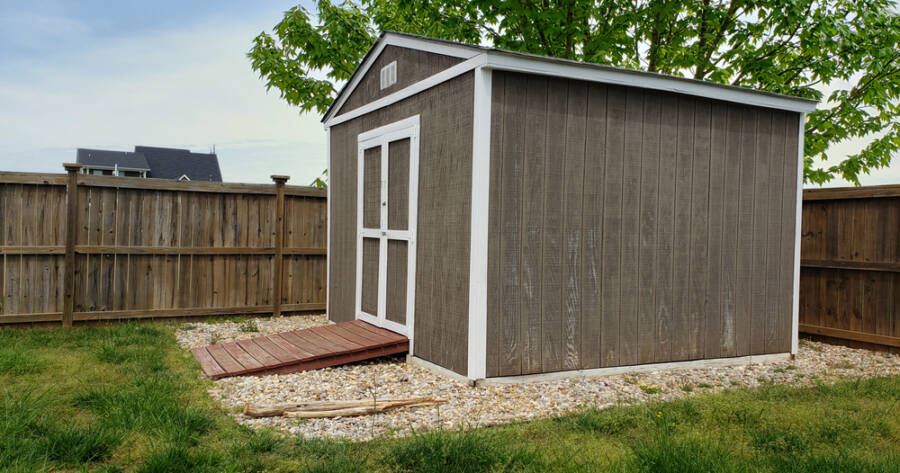Outdoor storage sheds offer a practical solution for organizing tools, equipment, and seasonal items while keeping your garage or home free from clutter. Whether you’re looking to store gardening supplies or outdoor gear, a shed can help you reclaim your space. However, before making a purchase, it’s important to weigh the pros and cons to ensure that a storage shed is the right choice for your needs.
The Benefits of Having an Outdoor Storage Shed
One of the primary reasons homeowners opt for outdoor storage sheds is the additional storage space they provide. Sheds are especially useful for those with limited space inside their homes or garages. By moving outdoor items like lawnmowers, shovels, and bicycles into a shed, you can free up valuable space in your garage or basement for other uses.
In addition to offering extra space, storage sheds help to protect your belongings from the elements. Items stored in an outdoor shed are shielded from harsh weather conditions such as rain, snow, and extreme heat. This protection can significantly prolong the life of your tools, furniture, and equipment.
Another advantage of outdoor storage sheds is the potential for increased property value. Well-designed sheds, especially those made from durable materials like wood, steel, or vinyl, can enhance the overall appearance of your yard or garden. For homeowners looking to sell, a neat and functional shed can be an attractive feature that adds value to the property.
Considerations When Choosing the Right Shed
Before investing in an outdoor storage shed, it’s essential to consider factors such as size, materials, and location. The size of the shed should be based on your storage needs and available space in your yard. While a small shed may suffice for basic tools, larger structures are necessary for storing larger equipment like lawnmowers or outdoor furniture.
Materials play a significant role in the durability and maintenance requirements of the shed. Wooden sheds are attractive and versatile, but they require regular maintenance, such as staining or painting, to prevent damage from weather. Metal and vinyl sheds are generally lower-maintenance options, as they are resistant to rot, insects, and extreme weather conditions. However, metal sheds can be prone to rust, and vinyl sheds may not offer the same aesthetic appeal as wood.
The location of your shed is another important consideration. It’s crucial to place the shed in an area that is accessible and convenient for your needs. Additionally, the location should allow for proper drainage to avoid water damage. Keep in mind that some locations may require a building permit, depending on local zoning laws.
The Downsides of Outdoor Storage Sheds
While there are many benefits to having an outdoor storage shed, there are some potential downsides that homeowners should be aware of. One of the main drawbacks is the cost. Depending on the size, materials, and design, a shed can be a significant financial investment. In addition to the initial cost, there may be additional expenses for permits, site preparation, and installation.
Another potential issue is the maintenance required to keep the shed in good condition. Wooden sheds, in particular, need regular upkeep to prevent issues such as rot or pest infestations. Metal sheds may require rust prevention treatments, while vinyl sheds may fade over time, losing their original appearance. If you don’t have the time or resources to maintain your shed, these issues can quickly become a burden.
Security can also be a concern with outdoor storage sheds. While sheds are useful for keeping your belongings safe from the elements, they may not provide the same level of security as your home or garage. Many sheds come with basic locks that may not deter thieves. Adding extra security features, such as a reinforced lock or an alarm system, can increase the overall cost of the shed.
Alternatives to Outdoor Storage Sheds
If you’re unsure whether a storage shed is the right solution for your needs, there are alternatives worth considering. One option is a storage container, which can provide additional storage space without requiring a permanent structure. These containers are often portable, making them ideal for people who need temporary storage or may move frequently.
Another alternative is utilizing vertical storage solutions, such as shelves or racks, in your garage or basement. By maximizing vertical space, you can store a variety of items without the need for an outdoor shed. However, this option may not be as effective for larger equipment or seasonal items.
If you have a large yard, you could also consider building a small storage area, such as a garden shed, directly onto your property. This option allows you to create a custom storage space that fits your needs while maintaining the aesthetic of your outdoor area.
Is an Outdoor Storage Shed Right for You?
Outdoor storage sheds can offer significant benefits, from providing extra space to improving the overall look of your yard. However, it’s important to consider the potential downsides, such as maintenance costs and security risks, before making a decision.
If you’re willing to invest in the shed and maintain it properly, it can be a valuable addition to your home.

